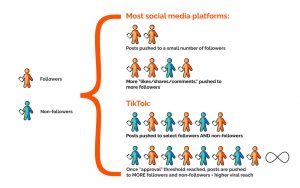Do you have confidence in your hiring process? If you have hired the right people—the ones with the smarts that impressed you enough to choose them—and have provided them with the tools necessary to do the job, then you need to give them the freedom to get the job done. This means trusting them enough to allow them to reach their true potential. If you believe in your hiring process, then trust your people. As Steve Jobs stated, “It doesn’t make sense to hire smart people and then tell them what to do; we hire smart people so they can tell us what to do.”
Realize that not trusting your employees costs you time and money. Additionally, micromanaging and being involved with every decision the team makes creates a bottleneck. Therefore, you need to come to terms with any trust issues.
Why is it so hard to trust employees? Some business leaders believe that their employees need to earn their trust before being trusted—rather than the other way around. Others are afraid to be vulnerable with their teams, while many more are fearful of sharing confidential information—the very information their teams need to be trusted to get the job done.
Allowing your team to have a greater role in the decision-making process means you need to trust them. Stop defining every step they need to take in order to get the job done. As a leader, your role should be one that focuses on defining outcomes and giving the team more responsibility for figuring out the best way to get there. Your team is working on the front lines every day, so they are probably smarter than you are when it comes to the real details of the project.
In order to have a more participatory company and to allow your people to have true ownership and impact on the bottom line, your attitude toward them needs to change. Here are some suggestions to consider.
1. Discover/communicate core ideologies.
Core ideologies are the “almost never changing” foundation of your organization and are made up of your core purpose and core values. A solid core ideology becomes the glue that holds the organization together and the driver of all strategy and people decisions.
Core Purpose: This is the “why” of the organization, and it is not just about making a profit. Your core purpose answers the question, “What difference are we making in the world?”
Core Values: This is the “how” of the organization. Core values are a non-negotiable handful of rules your organization lives by every day. These values become your organization’s attitude and should drive your organization’s behavior, who you hire, and who you promote.
The right core purpose and core values act as a set of guiding principles for the organization. This allows leaders to stop micromanaging and give more freedom to their team members.
2. Encourage more ideas from your team; be participatory instead of dictatorial.
Dictatorial Management:
Your team’s effectiveness is limited by your vision and knowledge.
Your team will become paralyzed if you are not available to make a decision.
You feel ownership for all decisions.
Participatory Management
Allows the team to rise higher as all team members’ talents are used to the team‘s advantage.
Allows the team to make effective decisions, with or without you.
The team feels ownership for all decisions.
How to achieve participatory management:
Ask for suggestions, such as: What are the five dumbest things we do? Of what should we do more? What should we stop doing?
Focus on ways to reward intelligent failure rather than punish for mistakes made.
Conduct open-forum meetings to discuss events, ideas, and issues.
Follow up on suggestions consistently.
3. Conduct team-driven goal setting.
Good leaders and managers set goals for their teams and create an accountability structure to manage and measure results. Exceptional leaders take that idea one step further by allowing the team to set its own goals, which will allow them to take more ownership and accountability toward their accomplishment.
A team-driven goal-setting process can work as follows:
Conduct a team planning meeting where you focus on two objectives:
Ensure the team understands the organizational vision and strategic goals or initiatives. If your organization does not have a vision and a set of strategic goals or initiatives, create them before moving forward.
Ask your team to work together over the next week to identify four to eight key metrics that will drive the team toward the accomplishment of the organizational goals (i.e., number of sales meetings, number of new clients, number of referrals, customer retention rate, etc.). For each metric, they should also work together to set team and/or individual goals.
Conduct a follow-up team planning meeting to review the metrics and goals your team has developed. Push back if you are uncomfortable with either the metrics or the specific goals. Make sure your team is aggressive, but not unrealistic. Just because your team is setting its own goals does not mean you should not provide strong guidance when necessary.
4. Be vulnerable.
It’s okay for managers to say, “I made a mistake” or “I’m not very good at that.” Being vulnerable with your team members will dramatically increase their level of trust in you. They will also feel more comfortable sharing their vulnerabilities with you. Productive communications within your team will skyrocket.
5. Encourage arguments.
Does your team get along well? Do they always seem to agree with each other? Do you have trouble remembering your last major team conflict? This may seem strange, but if you answered “yes” to these questions, then you have problems. A team needs conflict to evolve. Think of this as Darwin’s theory of evolution for business. If good ideas do not crush bad ideas, and great ideas do not crush good ideas, a business and its employees will grow stagnant and die.
The formula for success is really very simple: Hire a great team; then give them the tools and the trust they need to do a great job.
(175)








